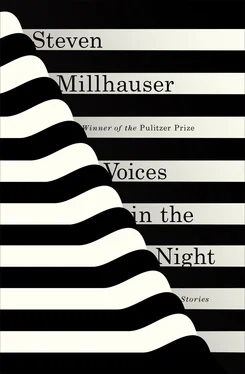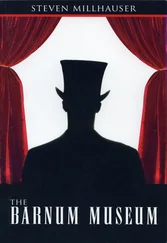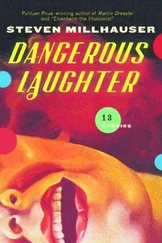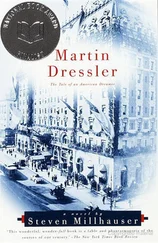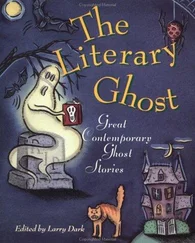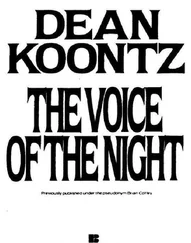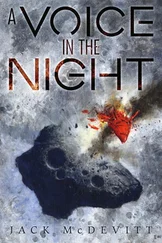Our local paper, the Daily Echo , reported the Scirillo incident on the second page, where Amy Banks’s father came across it over breakfast. He put down his coffee cup, shook the paper into shape, and read the piece aloud to his wife and daughter. When Amy then described her own weird adventure, Dr. Banks called the police. The Echo gave a full account the next day.
Now we were all on the alert for an intruder, possibly a peeping Tom, though we reminded ourselves that the details were sketchy, the observers impressionable. No doubt the incidents would soon have been forgotten, if it hadn’t been for a sudden rash of “sightings,” as they came to be called. The victims — or sighters — were mostly junior-high and high-school girls, who reported suspicious movements at night in the corners of living rooms, bedrooms, and darkened hallways. But they weren’t the only ones who saw things. A woman in her late thirties reported a stirring in her garage at dusk, several young mothers reported incidents of apparent intrusion, and John Czuzak, a retired policeman, claimed that one night when he entered his kitchen from the TV room he saw something move near the refrigerator, though he couldn’t say what it was that moved or even what the motion was like, other than “a kind of ripple.”
As the incidents spread across our town, creeping into the bedrooms of corporate lawyers and third-grade teachers and drill-press operators who worked at the machine shop out on Cortland Avenue, people began to propose theories to account for what was happening. Of these the Peeping Tom and the Prankster Theories were the most widely believed. The police warned us to lock our doors and windows at night and report any sign of unusual behavior in our neighborhoods. Some of us wondered whether there might be a physical explanation — maybe the ripples were effects of light produced by passing cars, or the results of air condensing because of a sudden temperature change.
These early guesses quickly gave way to more elaborate conjectures. The incidents, some said, were signs of a collective delusion bred by the boredom of summer — the sightings passed from girl to girl like an infection and then to anyone with a hungry imagination. We were trying to decide whether it pleased us or bothered us to think of the sightings as imaginary when a bolder theory appeared. The article was printed in the Opinions section of the Daily Echo and signed “A Friend of Truth.” In it the writer argued that the mysterious incidents were nothing less than manifestations of the invisible world — eruptions of the immaterial into our realm of matter. This argument, which many of us found irritating or laughable, was taken up, debated, condemned, and embellished, until in a late version it served as the founding principle of a group that called itself the New Believers. Members proposed that the visible world contains rents or fissures through which the invisible world shows itself. The “manifestations” were said to indicate those places of rupture.
Many of us who resisted these explanations found them more troubling than the incidents they sought to illuminate, for in their extremity, in their eagerness to embrace an unseen world, they seemed to us a sign of the very discontent that burned its way across our summer.
As ideas multiplied and arguments grew more heated, the manifestations themselves grew less frequent. Soon small groups began to form, composed of people intent on observing and even encouraging the incidents. Three or four friends would gather at a set time, at dusk or late at night, in a living room or bedroom. They would turn off the lights, except for a four-watt night-light set in the baseboard. For hours they would talk among themselves as if they were casually gathered there, an easygoing group of friends with nothing much to do on a summer evening, all the while watching closely for signs of stirring in darkened corners. The new burst of sightings that emerged from these exercises caused a brief excitement, but the evidence they offered was always in question, since it was difficult not to feel an element of contrivance and self-deception at the heart of those meetings. By the end of June, the few reports of manifestations no longer attracted serious attention.
It was now that we began to hear of new groups, hidden gatherings. These shadowy associations rejected the belief in manifestations as literal intrusions of another realm, while arguing that they were clues or shadow-events intended to call into question the claims of the visible world. One such group, the Silents, was composed of older teenagers and young adults. The Silents met secretly and followed strict dietary rules that limited them to grains and juices. What brought them to our attention was the rumor that they practiced something called Ultrasex. From our bedroom windows at night we would sometimes see them, young people in flowing gowns, moving through the streets toward secluded places. In basement playrooms, in church graveyards, in small clearings in the north woods, they would hold their meetings, after which they would lie down in pairs and strive for a consummation that had nothing to do with the body. Love, desire, lust itself, according to the Silents, were strictly immaterial events. Touching, hugging, kissing, stroking, rubbing, to say nothing of sexual intercourse, were all forms of failure — descents into the realm of matter. Members of the group were encouraged to lie as close as possible beside a partner, who was often partially naked, and, while rigorously abstaining from the act of touch, give way to sensations of desire of such ferocious intensity that the body seemed to dissolve in flames. It was said that this discipline, far from punishing the flesh, made use of the material body to create sustained heights of spiritual ecstasy, in comparison to which the most violent orgasm was the twitch of an eyelid.
Those of us who deplored such practices understood they could not last, while at the same time we acknowledged that the turn away from the body was only another sign that the old satisfactions could no longer be taken for granted.
It was about this time that we became aware of something else, as we lay awake at night with closed eyes and unquiet minds. At first it was only a faint noise, a scratching sound in the dark. Soon you could almost hear them: breaking into the cement with their picks, digging down with their shovels and spades. From the outset we called them the tunnelers. In houses scattered throughout our town, in ranch-house developments and older neighborhoods, they were said to be at work, the same family men who in other summers had gone bowling or settled down with a beer and a bowl of chips in front of the TV. Sometimes after dinner, sometimes late at night when their wives and children were asleep, they would go down to their cellars and continue digging. And though the tunnelers themselves never spoke of their work, so that we had to rely on rumors and thirdhand reports, we believed in the tunnels, we understood them immediately. In that relentless digging, that digging to nowhere, we saw a desire to burst the bonds of the house, to set forth, from the familiar place, into the unknown. Sometimes a tunneler would raise his pick over his shoulder, swing it against the beckoning dirt, and feel a sudden loosening. A moment later he’d break through to another tunnel, where a neighbor was hard at work. Then the intruder would lean on the handle of his pick, wipe his forehead with the back of a sleeve, and exchange a few awkward words, before retreating and changing direction.
In our beds at night, listening to the call of crickets and the rush of trucks on the thruway, we could hear that other, more elusive sound, which might have been the sound of many shovels striking against earth and stone — and we had the sense that down there, all across town, beneath our bedrooms and kitchens and neatly mown backyards, far down beneath the roots of pine trees and the haunts of garden worms, a web of passageways was being woven, an intricate system of crisscrossing hollows, so that our yards and houses sat upon a thin crust of earth that at any moment might burst open with a roar.
Читать дальше
